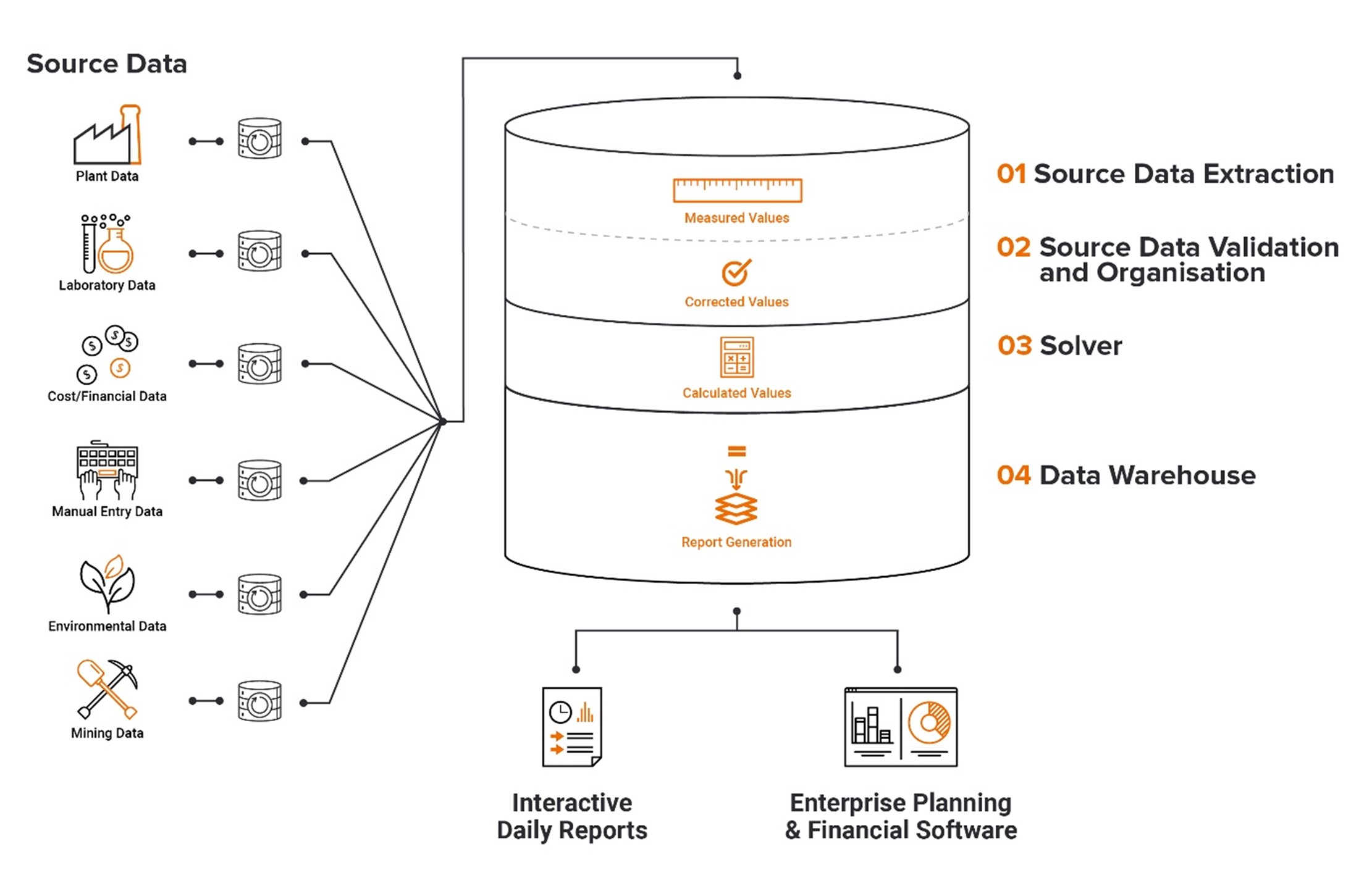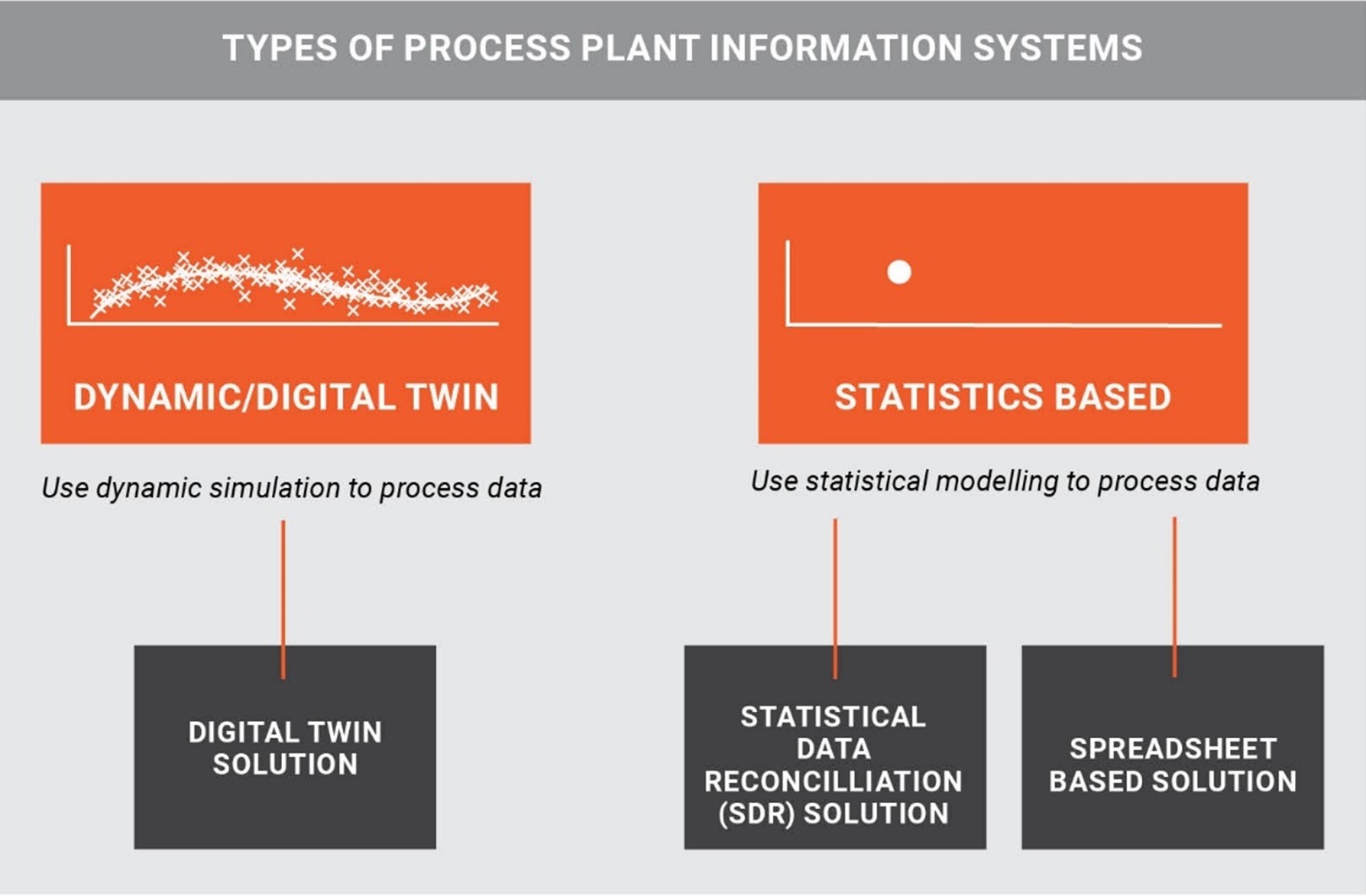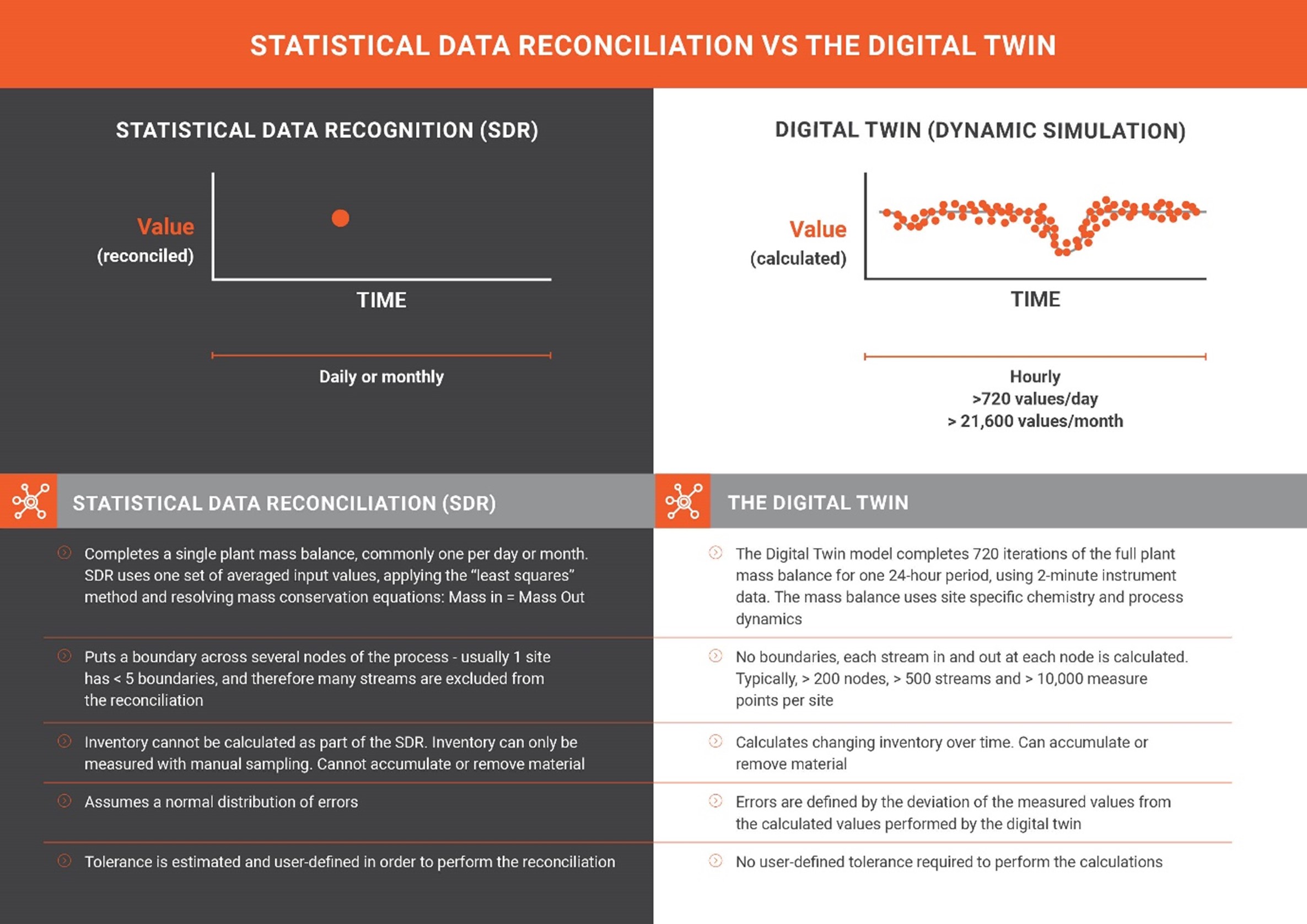10 questions to ask when choosing a process plant information system

Owners and operators of modern mineral processing plants have a range of options when it comes to selecting a system that can accurately monitor and measure outputs. This article poses some key questions for those that are looking to upgrade their plant systems and get the best out of their operation.
The software used by minerals processing plants has changed enormously in the last decade. Today, the owners and operators of processing plants have all kinds of innovative technology at their disposal, which means they can detect issues and predict outcomes with an incredibly high degree of accuracy and speed.
Despite this, process plants continue to use Excel, or make the decision to implement dated or very limited plant information software. Sometimes this comes down to budget. Other times, it simply comes down to a lack of awareness regarding the types of systems that are available. Some operating plants do not even have a data historian in place to capture data from the control system.
Here are 10 key questions to ask if you are thinking about implementing a new process plant information system and want to make use of all the data that is being generated at your operation.
1. Have you brought together the right stakeholders?
Perhaps the most important first step in any digital transformation exercise is ensuring that you have all stakeholders on board from the very beginning. Different teams and departments may have divergent priorities (Figure 1), and it’s essential that they’re all accounted for at the start of any new initiative. The executive team/board, for instance, may be focused on lowering financial risk or meeting governance requirements; your IT team may want to prioritise security and system integration; and your engineers may be focused on technical functionality and data integrity. By ensuring all stakeholder requirements are captured and considered – early on – you can maximise buy-in and avoid potential stumbling blocks down the track.

2. What other systems do you need to integrate with?
Ensuring your process plant information system can interoperate with other existing or legacy systems within your business is vitally important in enabling you to get overarching insights (Figure 2). This can include lower-level systems such as plant historians and laboratory databases, as well as broader enterprise business applications and in-house purpose-built applications. The system should also be able to extract and compare data from a range of sources. Another important consideration is what home-grown solutions exist already, and if they are worth retaining.

3. How will you ensure the quality of your data?
Data is at the core of any process plant information system, and an advanced system should have a robust, inbuilt data validation analysis tool to safeguard data quality. For instance, at the extraction and load stage, the system should validate source data to determine if there are missing values or samples, and that the values are within an expected range. In the pre-processing stage, the system should again check measured data that’s marked as critical prior to the mass balance to determine if there is any instability in the values. Data should also be constantly validated and crossed-checked across the mass balancing process, to ensure the context of what occurred at that time step is considered. And during post-processing, any calculated values should be checked against the measured values, and any major deviation should be flagged.
4. What type of solution is right for your plant?
Data collection is only part of the required functionality of a process plant information system. The system will need to use this collected data to complete a full mass balance of the site. This mass balance is used for metallurgical accounting, production reporting and process optimisation analysis.
There are several different options to consider, and it’s critical you choose the one that fits your specific needs and requirements. This is a decision that will require considerable guidance from your operations/engineering stakeholders, especially as they will be using the system on a day-to-day basis. Also, it’s important to be mindful that not all systems are built the same and cannot be compared like-for-like. Broadly speaking, however, there are three different types of systems as shown in Figure 3.

Spreadsheet/Excel-based systems
While Excel is not technically a process plant information system, most minerals processing plants continue to use it to capture, store and cross-reference data. Reports are usually generated by manually copying and pasting data into various worksheets with links to other workbooks, and there is typically no integration with the plant’s source data systems.
Pros
- Almost no software licensing costs – most employees already have it as part of their Office software.
- Minimal training – Excel is a familiar tool and is also easy to use.
Cons
- Data can be manipulated/altered – formulas and data within the spreadsheet can be modified anonymously at any time without a trace– affecting data accuracy.
- Lack of compliance – Excel documents are not typically traceable nor auditable, and anyone can change or manipulate data, meaning they are not AMIRA P754 compliant.
- Overly manual – Spreadsheets are not typically connected to source data, requiring manual input. Excel can also be cumbersome and time-consuming, have potential version control issues and be slow to process data.
Statistical data reconciliation (SDR) systems
These systems use statistical data reconciliation (SDR) technology to reconcile measurement data. Typically, this measurement data comes from lab assays and plant instruments, and the objective of the data reconciliation is to find a set of estimates for the measured values which are as close as possible to the actual measurements taken (known as the ‘least squares’ method), so as to verify mass balance conservation laws.
Pros
- Simple technology – SDR is based on simple technology that has been widely used in the industry since the early 1980s. These systems were proven to be the best solution available at the time when computational power was limited.
- Simple and fast implementation – These systems are built for application across several industries and require configuration only and no specific development.
Cons
- Low data resolution – Process variability is lumped into one single averaged value for each stream, and it’s common practice to use straightforward averages of several measurements of plant variables taken over a certain period of time.
- Errors may not be fully accounted for – It’s assumed the measured values used in the reconciliation have no gross errors. However, if a gross error is present, it will distort the data reconciliation.
- Inventory cannot be calculated – Inventory can only be measured with manual sampling. The SDR engine cannot accumulate or remove material.
- Data can be manipulated/altered – These systems require users to enter confidence intervals and estimated standard deviations for measured values to perform the data reconciliation used for the mass balance. These estimates can be manipulated to report more favourable KPIs such as recovery and yield. This can lead to incorrect reporting, which can affect compliance and eliminates opportunities to action or identify process inefficiency.
- Process optimisation may be limited – These types of solutions can perform mass balance calculations for streams that can be measured, but in reality, there are many streams that cannot be measured and are unknown. Therefore, operators work with limited data – meaning opportunities to optimise processes are missed.
- Infrequent reporting – For daily reporting, inventories are simply rough estimates with associated error. Often, however, reporting with calculated inventory is limited to once a month.
Dynamic digital twin solution
‘Digital twin’ technology (also known as dynamic simulation) for the minerals processing industry has been commercially available and successfully implemented globally in resource companies for the last 10 years. It is gaining popularity as more organisations come to understand the many advantages over traditional SDR technologies and the value they bring (see Figure 4). As well as being industry specific, digital twin systems exceed AMIRA P754 guidelines, giving stakeholders complete confidence in their data. Unlike other solutions, the real value with this technology is in the process optimisation capabilities as they are customised specifically to the chemistry and process dynamics of the plant.
Pros
- High data resolution – With a digital twin system, each node is simulated, with all streams accounted for. For instance, an SDR engine will complete a single plant mass balance, commonly one per day or month. The digital twin completes 720 iterations of a full plant mass balance for one 24-hour period.
- Anytime, anywhere access to data – Inventory can be measured at any time and isn’t limited to scheduled manual lab assays. Rather than being reconciled and adjusted using statistics, measured data is overlayed on a simulated model to validate the accuracy of the measured data at a point in time.
- Multiple data inputs – The dynamic mass balance takes the most important information generated by the plant, such as production ore feed rates, and uses this as the main inputs for a model of the plant. It also takes into account a broad range of other inputs – including multiple sample assay results and plant instrument data. All of this information is used to create a second set of data, where flows, inventory changes and even chemical reactions are accounted for. The dynamic model is also able to capture volumes and residence times, which is particularly important in hydrometallurgical plants.
- Automated data transfer – This ensures information can be accessed, collected, evaluated and reported without delays or user intervention.
- Industry specific – Importantly, these systems are also specifically created for minerals processing plants, and are designed for complex chemical processes.
Cons
- Up-front cost – Due to their power and sophistication, digital twin solutions can be the most expensive of the options initially. However, the scope of the insights means they help plants achieve a rapid return on investment, sometimes a payback before implementation of the solution has been completed. It is important to note that often a lower priced SDR solution will require significant resources on implementation to execute the desired functionality of the software, costing the organisation several times the quoted price as well as project delays.

5. What are your reporting requirements?
Without the right systems in place, reporting on plant production can be time-consuming and fraught with error. When choosing a process plant information system, it’s worth evaluating your reporting requirements, and ensuring your choice of system can provide the level of detail required and automate and simplify your existing processes.
Ideally, a solution should provide an easy-to-use interface, and enable your subject matter expert engineers to create their own ad-hoc reports based on a specific area of interest. You should also be able to track trends over time, receive alerts and conduct multi-variable analysis to ensure you get full visibility into your plant processes.
6. What are your governance requirements?
Corporate governance is an extremely important consideration. A minerals processing plant can’t have sound corporate governance if there are shortcomings in its process plant information system. A minerals processing plant that uses Excel has shortcomings. Be sure your system is AMIRA P754 compliant and adheres to all 10 principles of the code, ensuring data accuracy, transparency and best practice corporate governance. Also check that the system you choose can create an audit trail, meets ASX governance principles (or equivalent, depending on the legislative country of incorporation), and enables you to quantify, manage and minimise risk.
7. How much budget do you have?
Budget can play a key role in the decision-making process, and it’s important to conduct a feasibility study so you can determine an accurate estimate of cost for the system implementation. Be sure to account for the product licence fee, as well as the implementation/services fee of your technology partner, and ongoing support and maintenance costs. Also, you may need to allocate budget to reviewing/optimising the quality of your current data. This can sometimes be a ‘surprise’ cost down the track.
It can also be beneficial to create a business case comparing the cost of doing nothing, versus the cost of implementing the system – keeping in mind that often organisations don’t know of the process inefficiencies or the cost savings to be realised until the implementation is underway.
8. How will you mitigate risk?
While any technology implementation carries an element of risk, you can help mitigate the risk by considering the following:
- Does the technology vendor have a history of successful implementations? In what types of plants? Can they provide references to support this?
- What corporate values/strategy does this vendor have? Are they aligned?
- Is the solution industry specific? Is it open to error and inaccuracies by making many assumptions to retrofit into your process operations?
- Is it possible to get a demonstration of the solution in action before you decide to buy?
9. How much training and support do you require?
Training and support is a vital element of any successful technology implementation, so ensure that the solution you choose is supported by a rigorous training program. Ideally, the solution provider should train and support you every step of the way. Check that the training can be done remotely, and that there are ways to ensure staff have successfully completed and understood the training. Also be sure to ask what level of support the provider offers, what service level agreements they have in place, and the qualifications of their support staff.
10. What are your security and connectivity requirements?
Security is another vital consideration, and it’s essential that any system you choose provides a configurable security model, with user validation and separate levels of authorisation for tasks such as system administration, production adjustments and model execution. It’s also wise to choose a system that will allow multiple concurrent users, without having a major impact on network performance. Systems that limit the number of users encourage users to share logins, which can defeat the audit trail and pose security risks.
Conclusion
Choosing the right process plant information system for your operation can be a daunting task, and the number of solutions and pros and cons of each can be overwhelming. But with some up-front planning and answering some key questions, you can kick-start the digital transformation of your plant, and start to drive all kinds of great benefits.
About Metallurgical Systems
Founded in 2010, Metallurgical Systems is a world-leading technology company with a specific focus on improving outcomes for minerals processing plants. We are based in Sydney, Australia, yet deploy our solutions all over the world. Our team has deep and very nuanced industry expertise, and Includes metallurgists, engineers and technical experts. We are a proven technology, successfully implementing our software in eight countries, four continents and in three different languages. Our core team has been together for almost a decade, having invested over 400,000 hours of product development and continued investment into research and development. We also provide ongoing training and support for every solution we implement. As well as vast financial returns, we deliver clarity to the stakeholders and owners of minerals processing plants, helping them make much faster and better decisions, and meet all-important compliance objectives.